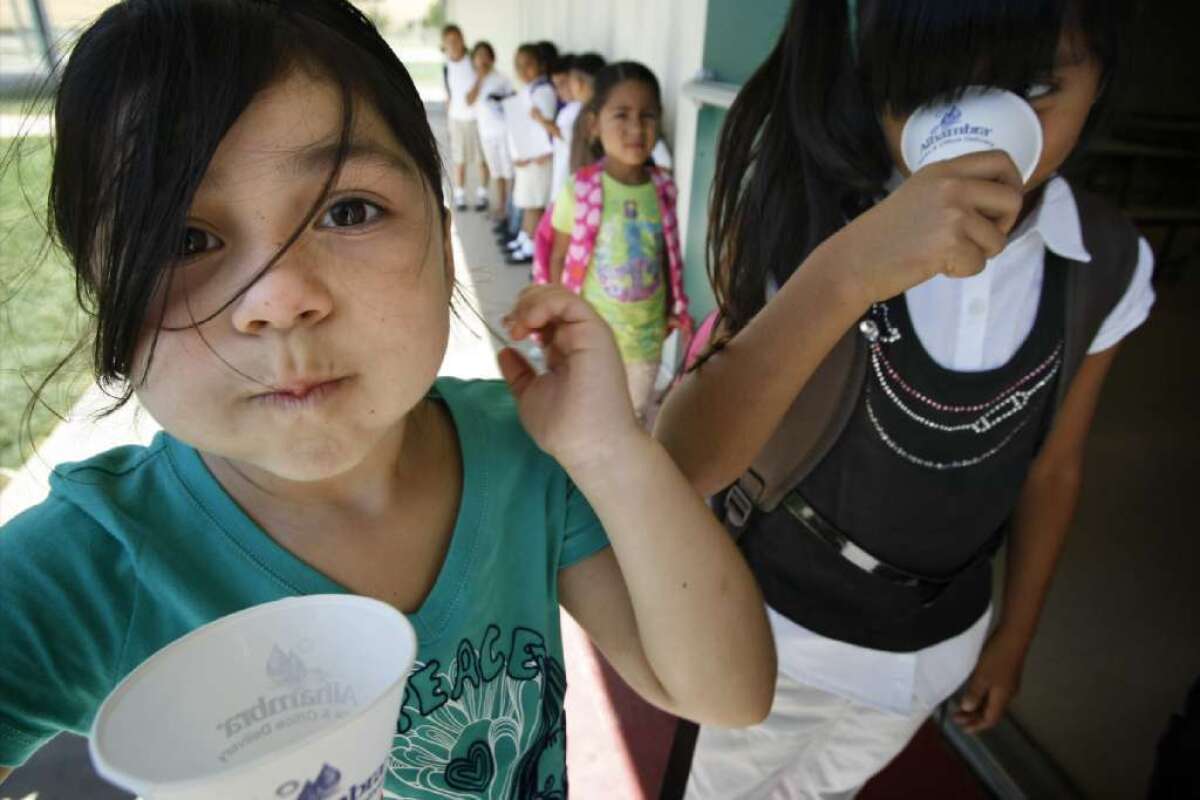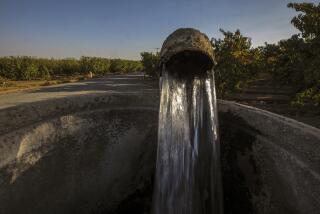Not all schools provide good drinking water, study says

- Share via
Access to free drinking water at school has improved, but California schools are not doing all they can, despite state and federal laws on the issue and evidence of the health benefits of drinking water, researchers said Thursday. One in four schools studied did not meet the legal requirements, they said.
“Schools have made great strides in reducing availability of sugar-sweetened beverages, yet ensuring excellence in drinking water access in schools is still an area of significant need,” according to the researchers from UC San Francisco, the California Food Policy Advocates and ChangeLab Solutions in Oakland.
“Although historically some states did specify that a certain number of [drinking fountains] be available for a certain number of students, there was generally no guidance regarding the location of those fountains,” the researchers wrote in the American Journal of Public Health.
Kids, parents and staff often have complained that the drinking fountains are not clean, not working or are dispensing unpalatable water. But some recent efforts to provide water in portable coolers or other dispensers seemed to get kids to drink more water, the researchers said.
Thanks to legislation, the mix of beverages offered in schools has changed, with a reduction in sodas and energy drinks sweetened with sugar or high fructose corn syrup, and more water and low-calorie drinks in vending machines and at school stores.
But that creates a problem too, because many children cannot afford to buy water and because of the disposal of plastic bottles, the researchers said.
In California, a law was enacted in September 2010 requiring that public schools provide free drinking water during meals. The Healthy, Hunger-Free Kids Act, also signed into law that year, includes a provision for access to free drinking water where meals are served -- though not where they are eaten.
Drinking water is associated with prevention of cavities, obesity prevention and improved cognitive function, the researchers wrote.
In 2011, they surveyed 240 administrators in California schools; they set up five standards to be met for a school to be considered providing “excellent” water service. No schools meet all these: water in four of five key spots (cafeteria, gym, etc.); one or more fountains for every 25 students; water available other than fountains to encourage drinking, such as pitchers; safe and appealing tap water; and fountains that are clean and in working order.
But all the schools offered water in at least one location. Thirty-seven percent offered it in four of the five locations. And although one in four did not meet the requirements, the researchers noted that their study was conducted not long after the California law took effect.
Urban schools, high schools and old schools “may need the most assistance in improving their drinking water access.” Administrators cited cost and other priorities as barriers, the researchers said.







